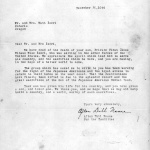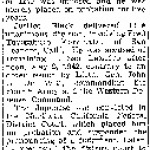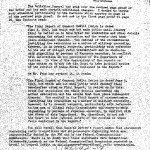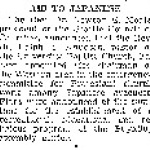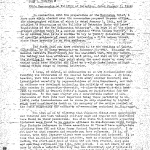Ernest Besig
| Name | Ernest Besig |
|---|---|
| Born | May 30 1904 |
| Died | November 13 1998 |
| Birth Location | Ravena, New York |
Executive director of the Northern California affiliate of the American Civil Liberties Union (ACLU) between 1935 and 1971. Besig asked Fred Korematsu to serve as the plaintiff in a lawsuit challenging the forced removal of Japanese Americans from the West Coast during World War II. Besig took on the case despite opposition from the national ACLU board of directors. He also investigated, publicized, and advocated against the mass detention without due process of hundreds of men in the stockade at the Tule Lake Segregation Center . The ACLU of Northern California under Besig's leadership supported the efforts of attorney Wayne Collins to prevent the deportation and to secure the citizenship of thousands of Nisei who had renounced their U.S. citizenship during World War II.
Early Life and Founding the ACLU of Northern California
Born in Ravena, New York in 1904, Besig received undergraduate (1926) and law (1928) degrees from Cornell University. In 1930, he moved to Los Angeles and ran a settlement house in Pasadena for Mexican laborers. He then worked with the ACLU of Southern California, investigating attacks against agricultural labor organizers in the Imperial Valley where he was physically beaten by vigilantes. [1]
In 1934, after San Francisco police shot and killed two workers during a longstanding maritime labor strike, the national ACLU sent Besig and another attorney, Chester Williams, to San Francisco to investigate and to organize against police and vigilante actions that deprived strikers and their supporters of their civil liberties. From those efforts the Northern California branch of the ACLU was born. Besig became the organization's executive director in 1935.
Before World War II, the ACLU of Northern California worked to repeal the state's criminal syndicalism law, to fight against deportations and government denials of naturalization based on immigrant political beliefs, to defend the rights of Jehovah's Witnesses not to salute the flag, and to counter attacks against labor organizers. [2]
Korematsu Case
After President Franklin Roosevelt issued Executive Order 9066 and the military announced plans to forcibly remove Japanese Americans from the West Coast, Besig was eager to find a Nikkei plaintiff to challenge the constitutionality of the orders. Besig not only faced a dearth of potential plaintiffs, but he also confronted opposition from the national ACLU and a lack of strong support from local ACLU members.
In early 1942, Besig conducted a poll of Northern California ACLU members about the mass removal of Japanese Americans. A majority of people who responded approved of Executive Order 9066 allowing the military to designate areas of the U.S. from which anyone could be excluded. Ballots were almost evenly split, though, on the question of whether the ACLU should test the constitutionality of Executive Order 9066 and the military's exclusion orders against Japanese Americans, with a slight majority voting against such a test case. A slim majority, however, disapproved of the mass removal of Japanese Americans from the West Coast, and more than 60% supported the establishment of hearing boards for Nikkei. [3]
Despite the mixed opinions of his local members, Besig sought a plaintiff to challenge the orders. In May 1942, he read a newspaper story about the arrest in San Leandro, California, of a young welder named Fred Korematsu who refused to leave the area to be incarcerated at the Tanforan Assembly Center . Besig visited Korematsu in jail and asked whether he would be the plaintiff in a lawsuit challenging the forced removal. Korematsu later recalled that Besig "was sticking his neck out for me" because "at the time racial prejudice was pretty strong." [4] Besig explained that virulent and pervasive anti-Japanese prejudice coupled with judicial deference to wartime military decisions made their prospects grim. Nevertheless, Korematsu agreed.
However, due to a split in the national board, the ACLU adopted a policy forbidding local branches from sponsoring cases objecting to the constitutionality of Executive Order 9066. As a result, the national ACLU asked Besig to drop Korematsu's case. Besig refused. He wrote to Roger Baldwin, the national ACLU's executive director, "we feel compelled to proceed as before, because we cannot in good conscience withdraw from the case at this late date." [5] Besig and Baldwin already had a testy relationship, and this disagreement contributed to tension between the national ACLU and the ACLU of Northern California which lingered until Besig's retirement.
Because Besig was not a member of the California bar, he recruited Wayne Collins, a young San Francisco attorney, to represent Korematsu. Eventually, the national ACLU participated in the lawsuit and Charles Horsky, a Washington, D.C. attorney selected by the national ACLU, argued Korematsu's case before the U.S. Supreme Court along with Collins.
Besig also bucked the national ACLU by submitting an amicus brief on behalf of the ACLU of Northern California in the appeal of Minoru Yasui , a Nisei attorney who challenged the constitutionality of curfew orders imposed against Nikkei during World War II. The national ACLU initially refused to support Yasui because he had worked for the Japanese consulate. But Besig eventually convinced the national organization to support Yasui's appeal. [6]
Tule Lake
In July 1944, Besig visited the Tule Lake Segregation Center to investigate conditions at the camp. What he discovered shocked him.
He learned that after martial law was imposed in November 1943, the army arrested more than 300 men and imprisoned them in Tule Lake's stockade without charges or hearings. Eighteen of them were still being held at the time of Besig's visit, more than eight months after their arrest. War Relocation Authority (WRA) and army officials denied prisoners visitors and censored their mail. The WRA built a wall to prevent the imprisoned men from waving to their families and friends. Camp administrators allowed Besig to interview some of the men in the stockade but not privately. Besig also heard that WRA internal security officers viciously beat men with baseball bats after a handful of Japanese Americans attempted to stop trucks they suspected of carrying food to laborers who had been transferred from other WRA camps to break a strike by Tule Lake farm workers. [7]
Returning to San Francisco, Besig wrote to Secretary of the Interior Harold Ickes cataloging the unlawful conditions at the stockade. Soon thereafter, the WRA allowed people to visit the remaining men in the stockade, and dismantled the wall that blocked prisoners from the rest of the camp. [8] Besig enlisted Wayne Collins to secure the stockade prisoners' release. After Collins threatened habeas corpus proceedings to free the men, the WRA quietly released them.
The ACLU of Northern California also aided 5 teenagers involved in pro-Japan groups at Tule Lake who were imprisoned for violating regulations prohibiting bugle blowing; Japanese insignia on clothing; and nationalistic meetings, speeches and sermons. Besig asked Wayne Collins and another attorney, Clarence Rust, to file habeas corpus petitions for the youth. After a U.S. District Court judge ordered the WRA to show cause why the writs should not be ordered, the camp director ordered the young men released. [9]
Besig disagreed with the national ACLU about the plight of thousands of Nisei who had renounced their citizenship under duress at Tule Lake. After the Department of Justice announced plans to deport them to Japan, Collins filed a lawsuit to prevent their deportation. The Department of Justice then held "mitigation hearings" in which renunciants could explain why they should not be deported.
Besig returned to Tule Lake in early 1946 as one of four impartial observers that the Department of Justice allowed to attend these hearings. Besig was not favorably impressed. He was critical that renunciants were not allowed legal counsel or told how to prepare for the hearings, that the hearings were closed to the public, that several hearing officers were belligerent when friends accompanied the subject of a hearing, and that many hearing officers resorted to browbeatings. [10]
Most of the renunciants also sought legal representation to regain their citizenship. The national ACLU barred local branches from filing a mass lawsuit representing these Japanese Americans. Wayne Collins took on their case. His suit charged that renunciations resulted from coercion by both the government and pro-Japan groups, which the government knowingly permitted to carry on an intimidation and pressure campaign. Although the ACLU of Northern California technically did not represent the renunciants, the affiliate was the only organization to give Collins' efforts unequivocal support. Collins eventually filed thousands of affidavits for Nisei to regain their citizenship. It took more than 13 years for most of them to secure their U.S. citizenship.
Postwar Efforts Related to Japanese Americans
In the years immediately after World War II, the ACLU of Northern California represented more than 100 Issei who faced deportation either because they had entered the country illegally or because the trade treaty that allowed them to remain in the U.S. had been revoked just before the war. Most of them had U.S. citizen wives and children. The case became moot, however, after Congress passed legislation in 1948 allowing the government to suspend deportation in "hardship" cases even when the immigrant was, like all Issei at the time, ineligible on racial grounds to become a U.S. citizen. [11]
The ACLU of Northern California under Besig's leadership also supported Wayne Collins' lawsuit to prevent the deportation to Japan of Japanese Peruvians who charged that they were kidnapped in Peru by U.S. military police, shipped to the U.S. against their will and imprisoned at Department of Justice camps.
Besig was not involved in other Japanese American cases in the post-war years, but he publicized in the organization's newsletter efforts to overturn and repeal California's Alien Land Law, the struggle of Japanese Peruvians who wanted to return to Peru, and the status of Nisei renunciants' efforts to regain their citizenship.
After he retired from the ACLU in 1971, he taught political science courses at San Francisco State University and served as a mediator for fee disputes within the San Francisco Bar Association. He died on November 13, 1998, at the age of 94.
For More Information
Bangarth, Stephanie D. Voices Raised in Protest: Defending Citizens of Japanese Ancestry in North America, 1942–49 . Vancouver: UBC Press, 2008.
Hatfield, Larry D. "Ernest Besig, 94, ACLU Legal Crusader." San Francisco Examiner , Nov. 18, 1998.
Irons, Peter. Justice at War: The Story of the Japanese American Internment Cases . New York: Oxford University Press, 1983. Berkeley: University of California Press, 1993.
Kutulas, Judy. The American Civil Liberties Union and the Making of Modern Liberalism, 1930-1960 . Chapel Hill: University of North Carolina Press, 2006.
Schwarz, Stephen. "Ernest Besig." San Francisco Chronicle . Nov. 21, 1998.
Walker, Samuel. In Defense of American Liberties: A History of the ACLU . Carbondale: Southern Illinois University Press, 1990.
Weglyn, Michi. Years of Infamy: The Untold Story of America's Concentration Camps . New York: William Morrow & Co., 1976. Updated ed. Seattle: University of Washington Press, 1996.
Footnotes
- ↑ Judy Kutulas, The American Civil Liberties Union and the Making of Modern Liberalism, 1930-1960 (Chapel Hill: University of North Carolina Press, 2006), 50-51.
- ↑ Robert Logan Knutsen, "The American Civil Liberties Union of Northern California", MA Thesis, University of California Berkeley, 1950.
- ↑ ACLU News , April 1942, 1; ACLU New s, May 1942, 2.
- ↑ Kutulas, The American Civil Liberties Union , 117.
- ↑ Peter Irons, Justice at War: The Story of the Japanese American Internment Cases (New York: Oxford University Press, 1983; Berkeley: University of California Press, 1993), 131.
- ↑ Irons, Justice at War , 172-73.
- ↑ ACLU News , August 1944, 1–2.
- ↑ ACLU News , September 1944, 1.
- ↑ ACLU News , August 1945, 1; ACLU News , September 1945, 3.
- ↑ ACLU News , February 1946, 3; Michi Weglyn, Years of Infamy: The Untold Story of America's Concentration Camps (New York: and Seattle: University of Washington Press, 1996), 257-258.
- ↑ ACLU News , February 1946, 3; ACLU News , August 1948, 3.
Last updated Dec. 8, 2023, 7:40 p.m..

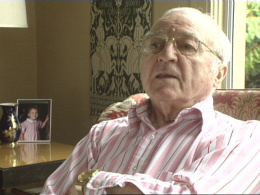 Media
Media

